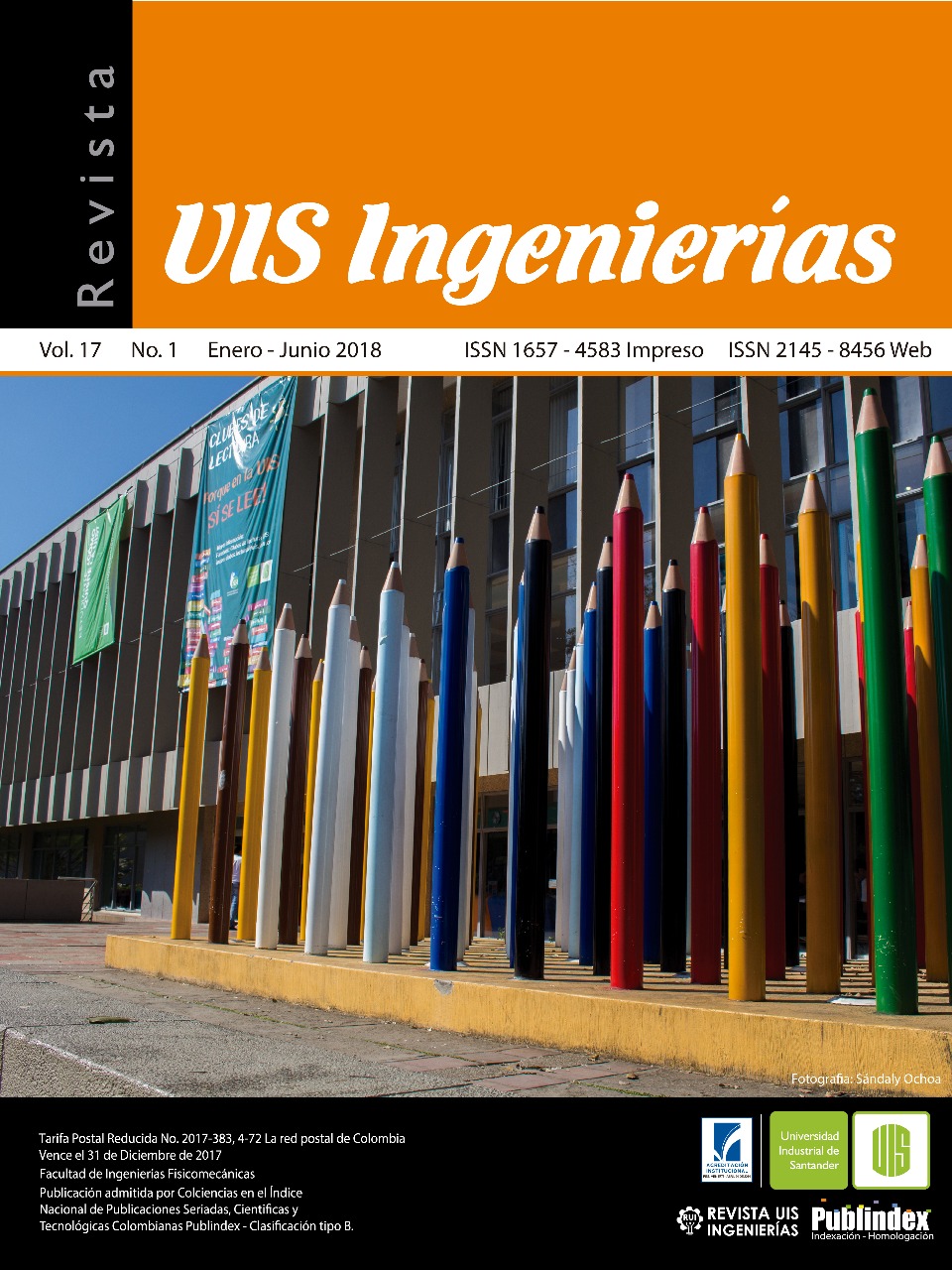Published 2018-01-05
Keywords
- solar dryer,
- Renewable energy,
- PCM,
- heat transfer
How to Cite
Abstract
The increasing interest in renewable energy has opened an opportunity to apply this technology in the industry and domestic sector. However, in solar-based systems, limitations associated with the intermittent energy delivery can cause unstable performance and unreliable designs. Weather fluctuations, such as wind speed and appearance of clouds, are considered the principal factors that contribute to the instability in the amount of energy available. In the agriculture, for instance, the use of thermal solar energy applied to dryer systems is highly desirable since the process is energetically very intensive. Therefore, it is feasible to design dryer devices for agricultural products, with important economic returns due to energy savings and the value added to the materials processed. Thus, the energy performance of systems that operate with solar thermal energy can be improved by introducing an energy accumulation system based on the use of phase change materials (PCM). The detailed methodology for the design of a thermal energy accumulation system for a tunnel dryer type Hohenheim for agricultural products is presented. As PCM, paraffin is chosen because its melting temperature is near 60 °C, which is an appropriate value for the drying temperature of this kind of products. The theoretical calculations show that the value of the surface temperature has an important influence on phase change calculations and the total mass of PCM required in the system. On the other hand, the heat transfer is dominated by the external heat transfer in the air. Additionally, the tube diameter significantly affects the phase change time. The results obtained are important and make a significant contribution to the knowledge required for implementations of similar systems, since little has been explored in this field in regions where the weather conditions are suitable to unexpected changes. The design should be implemented in an experimental prototype of Hohenheim dryer and its performance is to be determined based on measurement of the energy change of the drying air.
Downloads
References
Mekhilef S, Faramarzi S Z, Saidur R and Salam Z “The application of solar technologies for sustainable development of agricultural sector Renew.” Sustain. Energy Rev. vol.18, pp. 583–94, Dec, 2013.
Tiwari G N, Bhatia P S, Singh A K and Sutar R F “Design parameters of a shallow bed solar crop dryer with reflector.” Energy Conversion. Management. vol. 35, no. 6, pp. 535–42, Jun, 1994.
Karim M A. and Hawlader M N A. “Development of solar air collectors for drying applications.” Energy Conversion. Management. vol. 45, no. 3, pp. 329–44., Feb, 2004.
García P, Rincón S and Cuervo S. “Implementación del secador solar de túnel tipo Hohenheim en productos agrícolas, Revisión de literatura.” Rev. Puente, vol. 10 no. 1, pp. 7–19. 2016.
Hossain M A. and Bala B K. “Drying of hot chilli using solar tunnel drier.” Sol. Energy Rev. vol. 81, pp. 85– 92, Jan, 2007.
Bala B K, Morshed M A and Rahman M F. “Solar drying of mushroom using solar tunnel dryer.” Int. Sol. food Process. Conf. 1–11. 2009
Hossain M A, Woods J L and Bala B K. “Optimisation of solar tunnel drier for drying of chilli without color loss.” Renew. Energy Rev. vol. 30, no. 5, pp. 729–742, Apr, 2005.
Hensel O and Esper A. “The Hohenheim solar tunnel dryer-20 years of succes Food Chain.” Int. J. small scale food processing, vol. 31, pp. 2–27, 2001.
Bareiss M and Beer H. “An analytical solution of the heat transfer process during melting of an unfixed solid phase change material inside a horizontal tube” Int. J. Heat Mass Transf. vol. 27,no. 5, pp. 739–46, May, 1984.
Çengel Y. “Heat and mass transfer: A practical approach ed McGraw-Hill.” Boston: Boston: McGraw-Hill, cop. 2007.
Thulukkanam K. “Heat exchanger design handbook ed CRC Press.” Boca Raton, Florida: Taylor & Francis Group, LLC, 2013.
Žukauskas A and Ulinskas R, “Efficiency Parameters for Heat Transfer in Tube Banks.” Heat Transf. Eng. vol. 6, no. 1, pp. 19–25. Oct, 1985.
Holman J. “Heat Transfer ed B Stenquist, New York: Raghothaman Srinivasan.” 2010.
Oliver A, Neila F J and García-Santos A. “Clasificación y selección de materiales de cambio de fase según sus características para su aplicación en sistemas de almacenamiento de energía térmica” Mater. Construcción, vol. 62, pp.131–40, Ene-Mar, 2012.
Sari A and Karaipekli A. “Thermal conductivity and latent heat thermal energy storage characteristics of paraffin/expanded graphite composite as phase change material Appl.” Therm. Eng. vol. 27, no. 8-9, pp. 1271–1277, Jun, 2007.
Ukrainczyk N, Kurajica S and Šipušié J. “Thermophysical Comparison of Five Commercial Paraffin Waxes as Latent Heat Storage Materials Chem.” Biochem. Eng. Q. vol, 24, no. 22, pp. 129–37, Jul, 2010.
Py X, Olives R and Mauran S. “Paraffin/porous-graphite-matrix composite as a high and constant power thermal storage material” Int. J. Heat Mass Transf. vol. 44, no. 14, pp. 2727–2737, Jul, 2001.
Himran S, Taraka R and Duma A “An Analysis on Thermal Energy Storage in ParaffinWax Using Tube Array on a Shell and Tube Heat Exchanger.” Int. J. Mech. Aerospace, Ind. Mechatron. Manuf. Eng. vol. 9, no. 10, pp. 1781–8, 2015.
Prasad A. and Sengupta S. “Nusselt number and melt time correlations for melting inside a horizontal cylinder subjected to an isothermal wall temperature condition.” J. Sol. Energy Eng. vol. 110, no.4, pp. 340–345, Feb, 1988.
P. P. Vergara-Barrios, J. M. Rey-López, G. A. Osma-Pinto and G. Ordóñez-Plata, “Evaluación del potencial solar y eólico del campus central de la Universidad Industrial de Santander y la ciudad de Bucaramanga, Colombia,” Rev. UIS Ing., vol. 13, no. 2, pp. 49–57, 2014.
C. A. Díaz Gonzalez , N. López, O. Gélvez Arocha and J. L. Chacón Velasco, “Diseño y construcción de una planta piloto para la producción de biodiesel de manera continua,” Rev. UIS Ing., vol. 7, no. 1, pp. 105–133, 2008.

